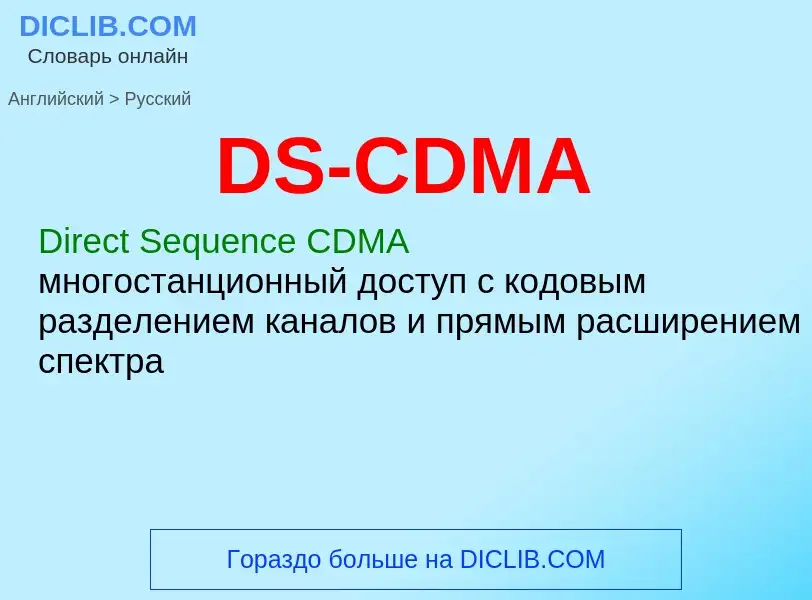Vertaling en analyse van woorden door kunstmatige intelligentie ChatGPT
Op deze pagina kunt u een gedetailleerde analyse krijgen van een woord of zin, geproduceerd met behulp van de beste kunstmatige intelligentietechnologie tot nu toe:
- hoe het woord wordt gebruikt
- gebruiksfrequentie
- het wordt vaker gebruikt in mondelinge of schriftelijke toespraken
- opties voor woordvertaling
- Gebruiksvoorbeelden (meerdere zinnen met vertaling)
- etymologie
DS-CDMA - vertaling naar Engels
общая лексика
Direct-Sequencing Spread Spectrum
технология расширения спектра сигнала прямой последовательностью, прямая последовательность рабочих частот, технология DSSS
технология передачи по широкополосному радиоканалу
Смотрите также
Wikipedia
In telecommunications, direct-sequence spread spectrum (DSSS) is a spread-spectrum modulation technique primarily used to reduce overall signal interference. The direct-sequence modulation makes the transmitted signal wider in bandwidth than the information bandwidth. After the despreading or removal of the direct-sequence modulation in the receiver, the information bandwidth is restored, while the unintentional and intentional interference is substantially reduced.
The first example of this technique was introduced by actress Hedy Lamarr and pianist George Antheil. Their patent for a "secret communications system" was filed in 1941. The design was inspired by the scrolls of mechanical player pianos and tested using a similar, miniaturized device to modulate a continuous signal across a spread of frequencies. Swiss inventor, Gustav Guanella proposed an alternative "means for and method of secret signals" soon after. With DSSS, the message bits are modulated by a pseudorandom bit sequence known as a spreading sequence. Each spreading-sequence bit, which is known as a chip, has a much shorter duration (larger bandwidth) than the original message bits. The modulation of the message bits scrambles and spreads the pieces of data, and thereby results in a bandwidth size nearly identical to that of the spreading sequence. The smaller the chip duration, the larger the bandwidth of the resulting DSSS signal; more bandwidth multiplexed to the message signal results in better resistance against interference.
Some practical and effective uses of DSSS include the code-division multiple access (CDMA) method, the IEEE 802.11b specification used in Wi-Fi networks, and the Global Positioning System.

